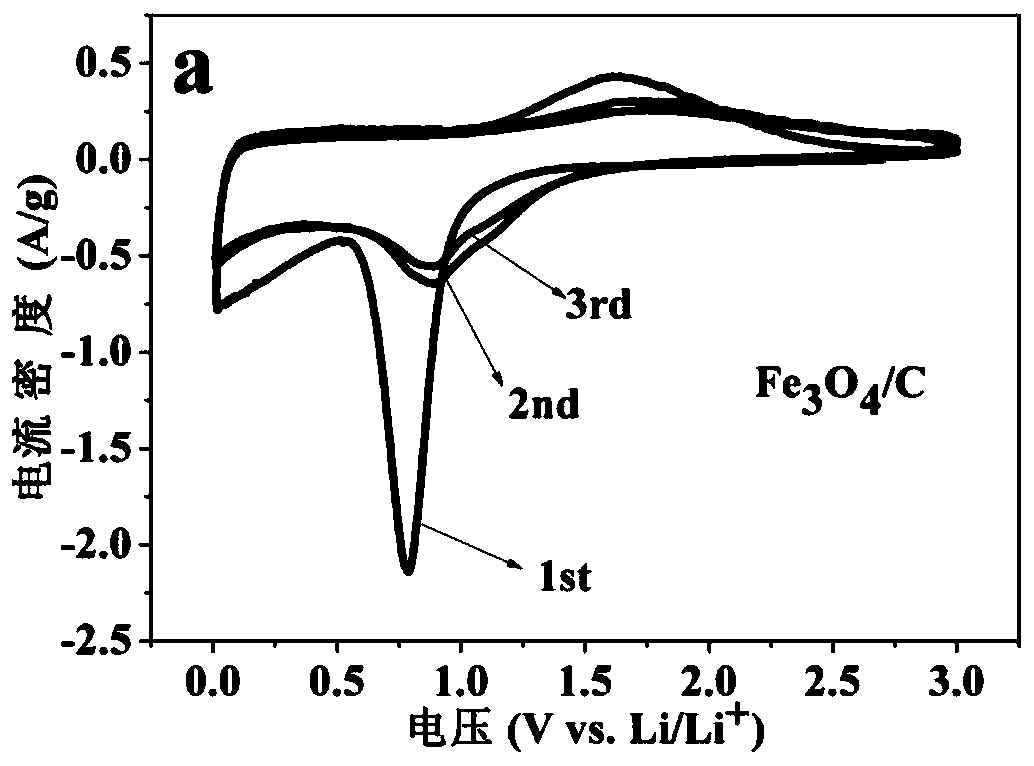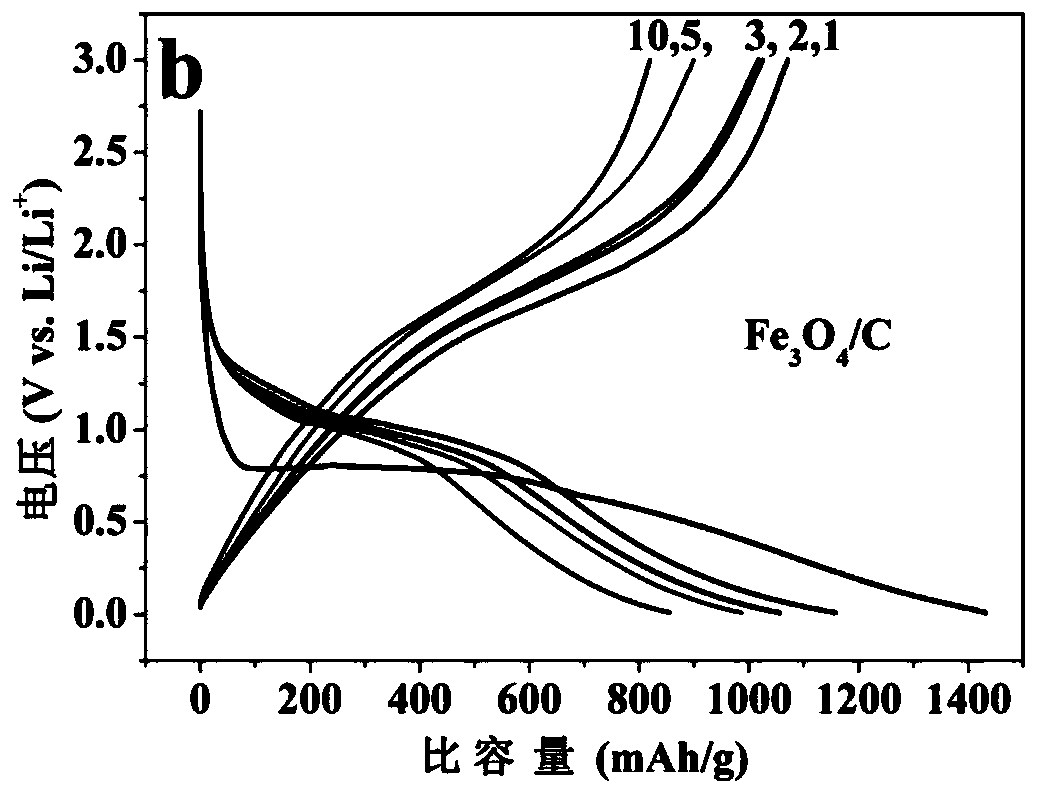In-situ carbon-coated Fe3O4 composite material, preparation method thereof and application thereof in lithium ion battery
A technology of lithium-ion batteries and composite materials, which is applied in the field of lithium-ion batteries, can solve the problems of inconspicuous material surface wrapping, increased irreversible capacity of materials, and decreased specific capacity of materials, and achieves simple and controllable preparation processes to realize industrial production. The effect of high specific capacitance
- Summary
- Abstract
- Description
- Claims
- Application Information
AI Technical Summary
Problems solved by technology
Method used
Image
Examples
Embodiment 1
[0026] (1) Configure 4g / L coal-based BFA aqueous solution and let it stand for 24h; configure 0.2mol / L ferric chloride aqueous solution;
[0027] (2) 50 mL of ferric chloride aqueous solution was added dropwise to 50 mL of BFA aqueous solution, and after stirring for 1 h, a gel was formed, and the precipitate was washed with water until the pH was 7, and dried to obtain BFA-Fe;
[0028] (3) Under nitrogen protection, BFA-Fe was heated to 550°C at a heating rate of 5°C / min, kept at 550°C for 5 hours, and then cooled to room temperature to obtain a core-shell structure with a particle size of 1.6 μm. The thickness of the coating layer is 0.8nm, and the in-situ carbon-carbon coating amount is 2wt% in-situ carbon-coated Fe 3 o 4 composite material.
Embodiment 2
[0030] (1) Configure 3.5g / L coal-based BFA aqueous solution and let it stand for 24 hours; configure 0.3mol / L Fe(NO) 3 9H 2 O aqueous solution;
[0031] (2) Fe(NO) 3 9H 2 O aqueous solution was added dropwise to 50 mL of BFA aqueous solution, and after stirring for 1 h, a gel was formed, and the precipitate was washed with water until the pH was 7, and dried to obtain BFA-Fe;
[0032] (3) Under nitrogen protection, BFA-Fe was heated to 550°C at a heating rate of 5°C / min, kept at 550°C for 5 hours, and then cooled to room temperature to obtain a core-shell structure with a particle size of 1.0 μm. The thickness of the coating layer is 0.7nm, and the in-situ carbon-carbon coating amount is 1.6wt% in-situ carbon-coated Fe3 o 4 composite material.
Embodiment 3
[0034] (1) Configure 3g / L coal-based BFA aqueous solution and let it stand for 24h; configure 0.3mol / L Fe(NO) 3 aqueous solution;
[0035] (2) Fe(NO) 3 The aqueous solution was added dropwise to 50 mL of BFA aqueous solution, and after stirring for 1 hour, a gel was formed, and the precipitate was washed with water until the pH was 6.9, and dried to obtain BFA-Fe;
[0036] (3) Under nitrogen protection, BFA-Fe was heated to 510°C at a heating rate of 4°C / min, kept at 510°C for 5 hours, and then cooled to room temperature to obtain a core-shell structure with a particle size of 1.5 μm. The thickness of the coating layer is 0.8nm, and the in-situ carbon coating amount is 2.1wt%.
PUM
| Property | Measurement | Unit |
|---|---|---|
| particle diameter | aaaaa | aaaaa |
| thickness | aaaaa | aaaaa |
| concentration | aaaaa | aaaaa |
Abstract
Description
Claims
Application Information
 Login to View More
Login to View More - R&D
- Intellectual Property
- Life Sciences
- Materials
- Tech Scout
- Unparalleled Data Quality
- Higher Quality Content
- 60% Fewer Hallucinations
Browse by: Latest US Patents, China's latest patents, Technical Efficacy Thesaurus, Application Domain, Technology Topic, Popular Technical Reports.
© 2025 PatSnap. All rights reserved.Legal|Privacy policy|Modern Slavery Act Transparency Statement|Sitemap|About US| Contact US: help@patsnap.com


